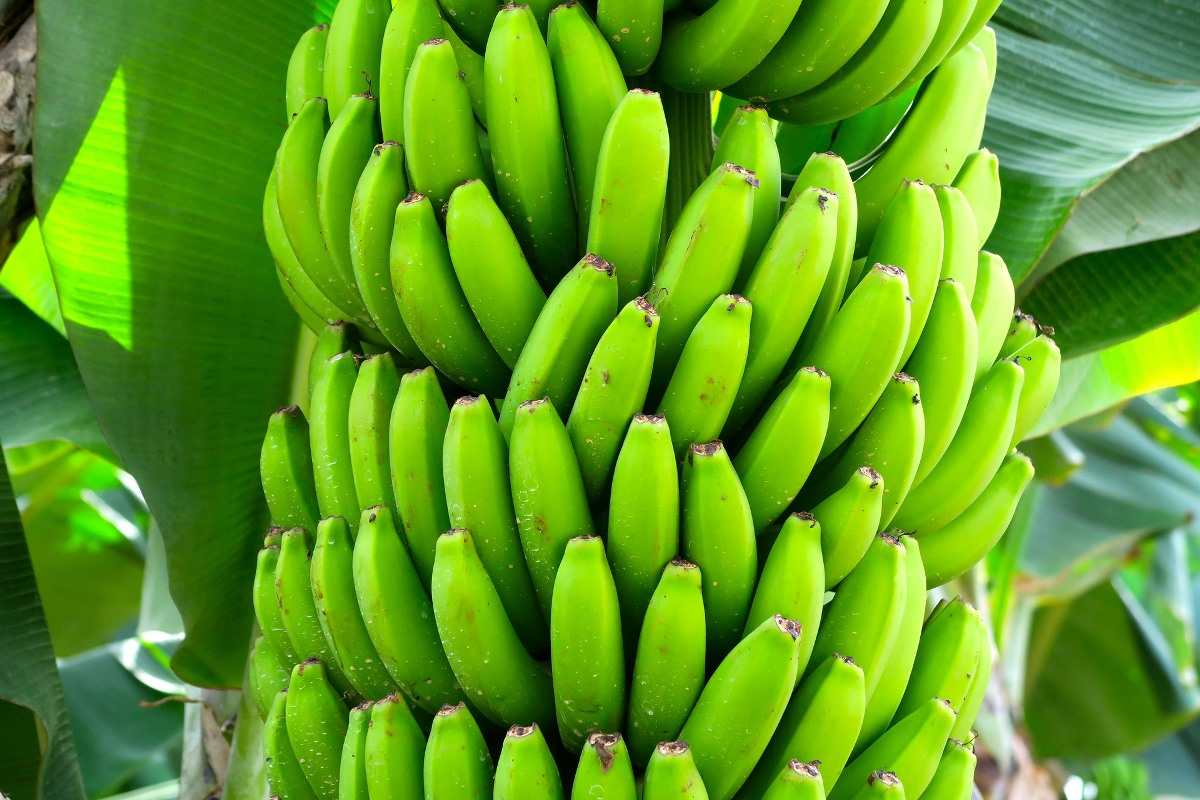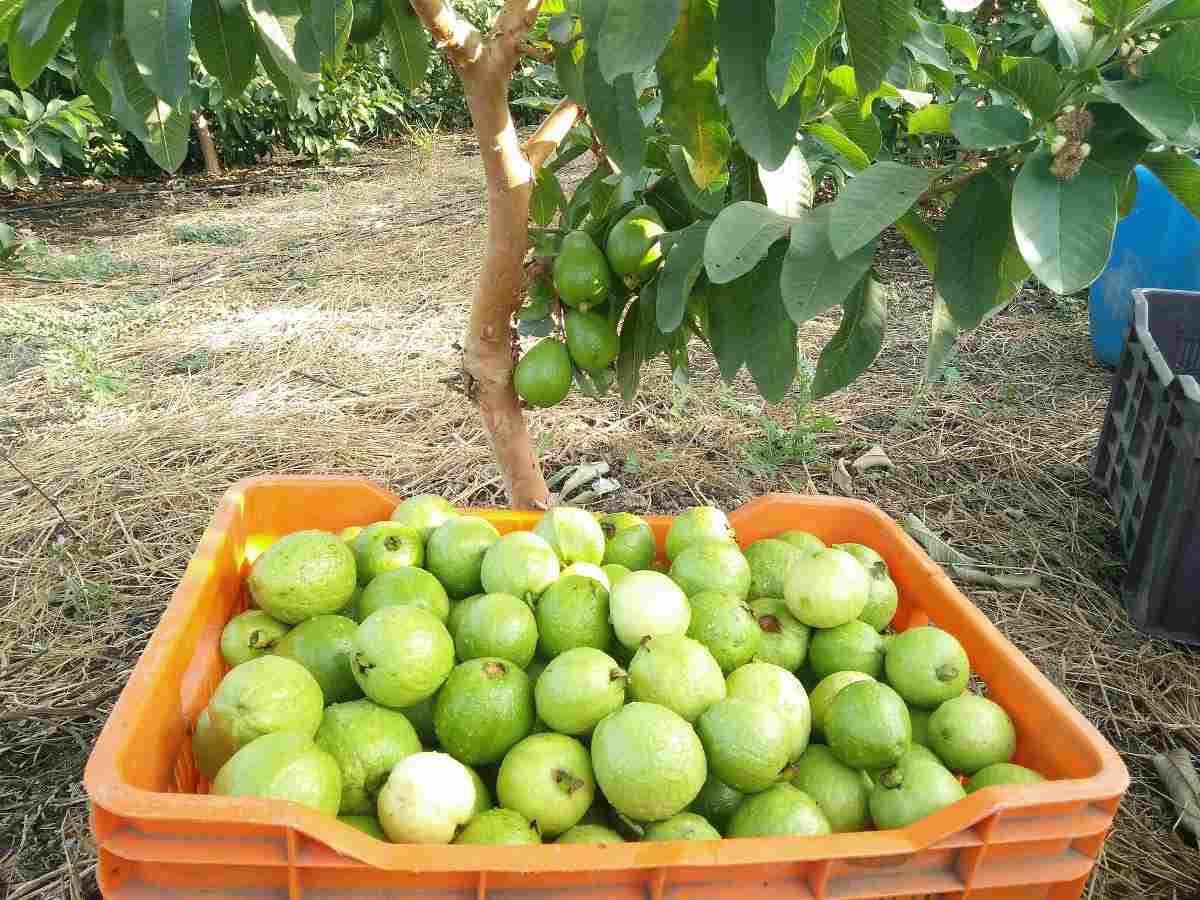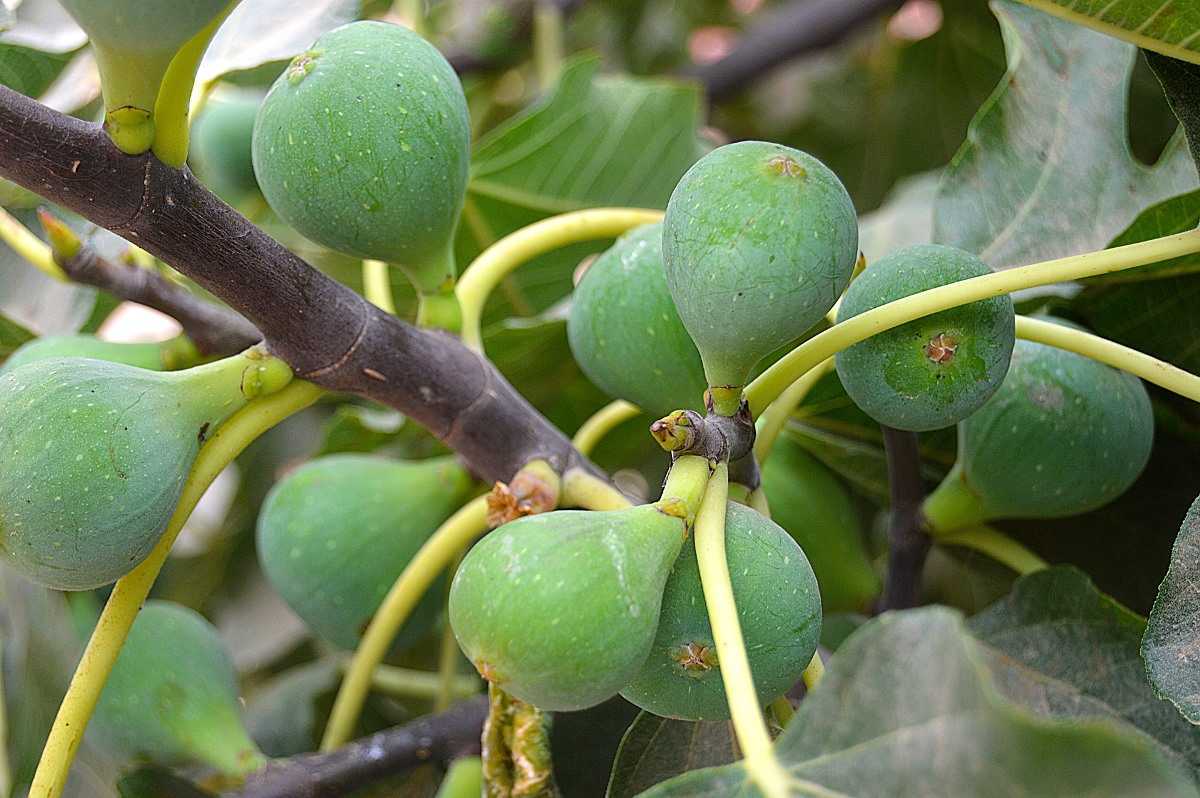Fast Growing Fruit Trees in India
Cultivation of fruit crops plays an important role in India. In an agricultural economy like India, fruit cultivation proves to be a profitable business in many ways. As most fruit trees in India could take an extended time to bear fruits, some fruit trees grow fast and also start producing fruits after some years or months of planting. It is stated that the standard of living of the people can be judged by per capita production and consumption of fruits.
Several fruit crops are capable of giving a higher tonnage of yield per unit area than other field crops. Fruits contain many vitamins and minerals. The fruit trees are a necessity not only for oxygen and food but also to ensure living in a safe environment. Fruit trees beautify the planet and save humans from the adverse effects of pollution and soil erosion. It cleans the air and reduces carbon footprints.
A Step-by-Step Guide to Fast Growing Fruit Trees in India
List of Fast Growing Fruit Trees in India
Papaya
Papaya is one of the fast growing fruit trees in India . Papaya trees are fast-growing trees that are very easy to grow and the fruits are present all year round. The trees need lots of sunlight, water, and fertile soil. Papaya trees bear fruit throughout the year and the fruits have a lot of health benefits. It mainly contains vitamin C, vitamin A, and carotenes. Papaya cultivated states in India are Orissa, West Bengal, Kerala, Karnataka, Madhya Pradesh, Tamil Nadu, and Gujarat. Papaya is a potential fruit crop for commercial cultivation in Goa.
Growing up to 20 to 25 feet tall, Papaya tree starts bearing fruits early. The Papaya tree leaves are deeply lobed, and the fleshy orange fruit has a sweet, musky taste. The fruit must be harvested when half yellow or not fully yellow. Otherwise, it can be split open by birds and flies.
Papayas are fast-growing and single stem plants. The trunk is soft and does not have bark and papayas don’t have branches and Papayas rarely grow to this age and size. To successfully grow Papayas, you want a frost-free climate, lots of sunlight, lots of water, and good soil. If you give your Papaya plant all of these conditions, then you can grow papaya from seed and generally have fruit in 6 to 12 months.
Banana

Banana is one of the fast growing fruit trees in n India. Banana is an herbaceous perennial plant and it is one of the most important fruit crops grown in India. This fast-growing tropical plant can reach 10 to 30 feet tall in less than 2 years. Banana fruit is the oldest and commonest fruit known to mankind. It is a nutritious palatable and easily digestible fruit. Banana is a popular fruit due to its low price and high nutritive value. Banana fruit is consumed in fresh or cooked form both as ripe and raw fruit.
In India, Banana trees are grown in Maharashtra, Tamil Nadu, Karnataka, Andhra Pradesh, Gujarat, and Assam. Globally, India ranks first in Banana production by producing 14 million metric tonnes annually. It is a rich source of carbohydrates and is rich in vitamins particularly vitamin B. It is a good source of potassium, phosphorus, calcium, and magnesium.
India leads the world in banana farming with an annual output of about 16.820 mt. In India, bananas are so popular among people that poor and rich alike like the fruit. Banana cultivation in India is the most popular agricultural practice. Bananas aren’t biologically a fruit, but a perennial herb plant. It takes 10 to 15 months for the stalks to grow with the fruit requiring 9 months.
Banana trees prefer to be grown in rich and fertile soil. Organic matter is important for their proper plant growth. An appropriate amount of water must be provided to keep the plant healthy. The plant is not affectionate towards strong winds and extreme weather conditions.
Ber Tree
This is one of the fast growing fruit trees in India. The Ber tree is a fast-growing tree and it is also called Indian plum. Also, the leaves of the Ber tree are used to feed Tasar silk. Ber tree is well known for growing even in adverse climatic conditions. The major Ber-growing states in India are Haryana, Punjab, Uttar Pradesh, Rajasthan, Gujarat, Madhya Pradesh, Bihar, Maharashtra, Andhra Pradesh, and Tamil Nadu. Ber fruits are rich in Vitamin C, A, and B complex.
This vigorous growing tree produces in a crown shape with droopy branches. The tree bears oblong to round drupe fruits that are juicy and sweet. All fruits ripen at different times; initially, they are green, but on ripening, they attain reddish color. Ber tree can be evergreen depending upon the weather and it is one of the fast-growing fruit trees in India.
Guava or Jaam
Guava is one of the fast growing fruit trees in India .Guava is one of the important commercial fruit crops in India. It is the 4th most important fruit after Mango, Banana, and Citrus. Guava plants are vegetative propagated by budding, inarching, or air layering. The deliciously sweet fruit is mainly used in beverages, desserts, and smoothies. The fast-growing tree can mature to a height of about 10 feet tall and roughly 15 feet wide.
- Types of Pesticides Used in Agriculture: A Beginner’s Guide
- Economical Aquaculture: A Guide to Low-Budget Fish Farming
- 15 Common Planting Errors That Can Doom Your Fruit Trees
- How to Make Houseplants Bushy: Effective Tips and Ideas
- Innovative Strategies for Boosting Coconut Pollination and Yield
- Pollination Strategies for Maximum Pumpkin Yield
- The Complete Guide to Chicken Fattening: Strategies for Maximum Growth
- Natural Solutions for Tulip Problems: 100% Effective Remedies for Leaf and Bulb-Related Issues
- Revolutionizing Citrus Preservation: Towards a Healthier, Greener Future

Successful Guava cultivation is grown under tropical and sub-tropical climate conditions. In areas with the distinct winter season, the crop yield tends to increase and quality improves. It can be grown up to an altitude of about 1515 m above mean sea level. Older plants can tolerate drought and high temperature at the time of fruit development can cause fruit drop. The guava tree grown from seeds shows a slow growth rate and may take 2 to 6 years to produce fruits, whereas plants grown through grafting or cutting churn out a faster yield of fruits. The Guava fruit has a sweet, mild taste and fresh aroma. The fruits have a green peel, followed by pink to white flesh with some encapsulated seeds.
Custard Apple
Custard Apple is also one of the fast growing fruit trees in India. The Custard Apple tree is fast-growing and responds well to mulching, organic fertilizers, and frequent irrigation if there is dry weather during the growing period. The Custard Apple tree does best in low-lying, deep, rich soil with ample moisture and good drainage. Custard Apple growing areas in India include Assam, Bihar, Madhya Pradesh, Maharashtra, Odisha, Rajasthan, and Uttar Pradesh, Andhra Pradesh, Telangana, and Tamil Nadu. About 55,000 hectares are dedicated to custard apple cultivation. It is hardy, medium in growth, and deciduous in nature.
The Custard Apple fruits are generally used as fresh, while some products or mixed fruits like custard powders; ice-creams are prepared from the fruits. Besides high nutritive value, it has a high medicinal value. An unripe fruit, seeds, leaves, and roots are used in medicinal preparations.
It grows up to 10-22 feet tall and it produces fruits with creamy-texture, aromatic, and sweet pulp, bound with inedible black seeds. The Custard Apple fruit is low in cholesterol and comes loaded with vitamin C, Manganese, Iron, and Potassium. The pulp is consumed raw or use in preparing shakes and ice-creams.
Fig Tree
Fig is one of the fast growing fruit trees in India. The Fig fruits are blessed with a juicy coating that carries crispy seeds inside. People it is preferred to consume it in dried form, instead of a fresh one. It is rich in iron and antioxidants, this fruit cures iron-deficiency, reduces sugar curbing and blood pressure. Fig tree releases white latex from the stem and leaves if broken. The fig plant is a fruit plant and also which is used as an ornamental plant. It is an important plant used in many commercial sectors for several purposes. It provides us with calcium, vitamins, and other nutrients.
In case if you miss this: Greenhouse Potato Production.

Fig trees are fast-growing fruit trees and are easy to grow. In India, fig cultivation is mostly done in Maharashtra, Gujarat, Uttar Pradesh, Karnataka, and Tamil Nadu. The total area under fig farming is around 5600 hectares of land with a production of about 13,802 thousand tonnes.
Fig can tolerate a fairly high level of sulphate or chloride salt. Medium to heavy, calcareous, well-drained, deep (about 1 m) soil having pH level of 7-8 is ideally suitable cultivation of fig. Several techniques are used for propagating Fig such as budding, hardwood cutting, air layering, and grafting. Though, the most commonly used method for commercially propagating the trees is through hardwood cuttings. Fertilization of the Fig trees majorly depends on the soil type, nutrient content, pH levels, and crop requirements. To keep the Fig trees more productive and to facilitate inter cultivation operations, the fig trees are trained to a desired height and shape. This large beauty is fast-growing and produces medium-sized, sweet, juicy fruits that are brownish-purple and then ready to harvest in July.
Peach
Peach is one of the fast growing fruit trees in India. The peach tree is a fast-growing tree that takes 2-3 years to bear fruit, but some varieties can harvest after one year if given proper care. The Peach trees can grow as tall as 20-25 feet, but frequent pruning keeps the tree till 12-15 feet. Since the Peach trees bear fruits through cross-pollinating, grow two different varieties with the same flowering time. The tree can grow a height of about 15 feet within a year and will be able to provide come delicious peach too.
In India, peach trees are mainly grown in mid-hills at a height ranging from 1000 to 1600 meters. Also, they do well in a wet and humid climate with cold winter and dry summer. It requires a chilling period level below 7°C for breaking dormancy and flowering.
Peach fruit is an extraordinary gem fruit crop, which is mostly cultivated in the temperate zone in the colder region, mainly in the hilly areas such as Jammu and Kashmir, Meghalaya, Uttarakhand, and Sikkim, etc. Pick the right peach variety and the right place, and give the tree the right care, and you’ll be picking ripe fruit in just a year or two. Among the most popular fast-growing fruit trees, peach trees are vigorous producers of plump, delicious fruits. Peach trees produce best in full sun at least 6 hours per day and good airflow. If you are starting the Peach trees in the ground, be sure to surround the trunk with a ring of thick mulch to keep the soil moist and protect the tree from lawn mower damage. These easy-to-grow fruits ripen in midsummer to the mid-fall season, depending on the cultivar and Zone.
Apple Tree
Apple is one of the fast growing fruit trees in India. Apple is also one of the fast-growing fruit trees in India and it is also suitable to be grown in the garden. Within 2 years, the apple tree will start producing fruits. The trees are moderately fast-growing, but growth slows with age. Apple trees bloom in the spring season, set fruit, and take from 100 to 200 days to reach harvest depending upon the variety. There are three tree varieties of popular apple trees that are classified as fast growers. They are Early Harvest, Red Delicious, and Yellow Delicious.
In India, Apple is primarily cultivated in Jammu and Kashmir; Himachal Pradesh; hills of Uttar Pradesh and Uttaranchal. Also, it is cultivated to a small extent in Arunachal Pradesh; Nagaland; Punjab, and Sikkim. Normally, Apple trees can be cultivated in all types of soil. However, loamy soil and rich in all essential organic matter along with well-drainage power is considered as the best soil for apple farming. Also, it should have a pH level between 5.5 to 6.8 with proper aeration.
Apricot
Apricot is one of the fast growing fruit trees in India. Apricot trees are one of those wonderful trees that are self-fruitful, meaning you don’t need a pollination partner to get fruit. Apricot trees are not tolerant of high levels of salt, boron, chloride, and other elements. Apricot tree feeding will be important in their overall care. They get what they need from the soil though, provided it was set up for apricot tree growing beforehand.
The Apricot tree is an important fruit crop of the mid-hill and dry temperate regions of India. Apricot fruit is rich in vitamin A and contains more carbohydrates, proteins, phosphorous, and niacin than many other common fruits. Apricot is grown commercially in the hills of Himachal Pradesh, Jammu and Kashmir, Uttar Pradesh, and to a limited extent in northeastern hills in India. Some drying type apricot trees are being grown in the dry temperate areas of Kinnaur and Lahaul Spiti in Himachal Pradesh and Ladakh in Jammu and Kashmir. An apricot tree grows at a fast rate, with height increases of more than 24 inches per year.
Apricot can be successfully grown at an altitude between 900 and 2,000 meters above mean sea level. The Apricot tree grows faster but takes 2 years to start producing fruits. Another point is, not all varieties have a faster growth rate, and some fast-growing Apricot types are Moorpark and Early Golden.
Pear Tree
Pear is one of the fast growing fruit trees in India. Pear trees are fast-growing fruit trees that may not only have a good height within a short period but also will be able to produce fruit. Pear trees need full sun to produce the most fruit. It could take 3 to 10 years for trees to begin flowering and producing fruit. In India Pear is cultivated in Himachal Pradesh, Jammu, and Kashmir, and Uttar Pradesh and low chilling varieties do well in subtropical regions.
The pear tree is one of the most important fruit crops in temperate regions. Pear fruits are tasty with a pleasant flavor. Pear tree can be grown successfully at 1200 to 1800 meters above sea level. It can tolerate very low-temperature levels below 0°C and can withstand high temperatures during summers (47°C). The best temperature level for its flowering and fruiting is 2°C in winter and 32°C in summers. Rainfall 100 to 125 cm is sufficient for its growth. The most peach tree takes 3 years to fruit, but it’s dependent on how well you take care of the trees.
Citrus Tree
Citrus is one of the fast growing fruit trees in India. Growing Citrus trees is highly dependent on climate and where you live. Citrus fruit trees are self-pollinating, so you need one tree to produce the fruit. Generally, they start producing fruit the year after they’re planted but are fully producing in 3 years. The Citrus tree is quite popular in the Indian gardens, thanks to its citric fruit and fresh aroma that fills in the landscape.
Meaningful information on fruit bearing trees. I am interested in growing such trees in Nashik district,
Keen on more details on commercial Agro Forestry